“Audit” sounds ominous for most businesses- the word brings vision of tax authorities turning offices upside down. But a marketing audit is nothing like that. Far from being bad, it actually helps you.
A review of your marketing strategies can bring about much needed improvement for your business. Therefore, the results of an audit can do wonders for you.
Running a review can be quite lengthy though. The best marketing inspections require a comprehensive check-up that requires a lot of resources, time, and money too. So a systematic process is necessary.
In this blog, we will go through what is a marketing audit, its importance, the different types of audit out there, how to conduct one, and the characteristics of a successful audit.
What is a marketing audit?
A marketing audit is a comprehensive review of your marketing plan, objectives, strategies, and the current marketing activities being executed by your organization. The goal is to evaluate your company’s marketing strategy to make improvements.
A review turns your marketing strategy inside out, revealing all its strengths and weaknesses. By reviewing the objectives, tactics, processes, and activities that make up your marketing strategy, you get new insights into your business and the brand’s core.
Upon finishing one, you should take some actionable insights into how to improve your website, content, SEO, and social media. And you should know more about your offline marketing tactics, like business referrals, word of mouth, trade shows, and other traditional strategies.
Importance of marketing audit
If you aren’t conducting marketing checks frequently, you could be losing a lot of marketing dollars. Here are five reasons it is a must for every type of business out there.

-Realign Your Marketing Activities With Your Goals
Many businesses are so focused on conducting the day-to-day tasks of running operations that they lose sight of the big picture and their long-term goals. When this happens, it can be challenging to understand why a particular marketing strategy has been set or if it is executing it according to plans.
A marketing audit is a way to take a step back, return to your business and marketing plans, and ensure that the daily activities you are conducting align with your business goals.
-See What Is and What Isn’t Working
Auditing helps you to explore all of the marketing activities your business is currently implementing and find out whether those strategies are working or not. Seeing your business’s marketing operations with an objective eye ensures that you can start making positive changes to the way you use your business resources. It’s also an opportunity to decide on marketing areas where your business is not performing according to your expectations.
With the facts and information you collect, you can make informed decisions on how you can better your efforts and get the best results from your strategies.
-Gain Exposure to New Ideas and Different Strategies
Although not its primary objective, auditing helps you to explore new ideas and strategies. This is because a marketing review requires you to research your business and the external environment. The research can help you find new ideas that you can implement for your own company.
During your research, you may unearth that your competitors are carrying out something you would never have thought of otherwise. With a few tweaks to make the strategy your own, you can create new marketing activities that bring great results.
-Get In-Depth Insight Into Your Competition
An excellent marketing investigation consists of deep-diving into your business’s external environment. The external environment also includes your brand’s competitors. As you research during the audit process, you will understand what your competition is doing in great detail.
By knowing your rivals’ strengths and weaknesses, you can improve the way you reach your market. Understanding what they’re performing well will help you plan how to do it better, so your business will reach the top.
For example, you could use keyword research tools to determine which keywords they are currently ranking for, and which terms you can leverage without costing too much of your marketing budget.
-Save Time and Money in the Long Run
The marketing and advertising world continues to change with new technology and customer trends. Therefore, a regular audit can help you to stay up-to-date and even ahead of the curve with your customers.
Without a regular check-in to ensure that your marketing strategies align with that of the marketing world, you could risk spending all of your marketing budgets into old, outdated, and inefficient tactics. You can invest in activities that work best for your business and your customers.
Types of the marketing audit
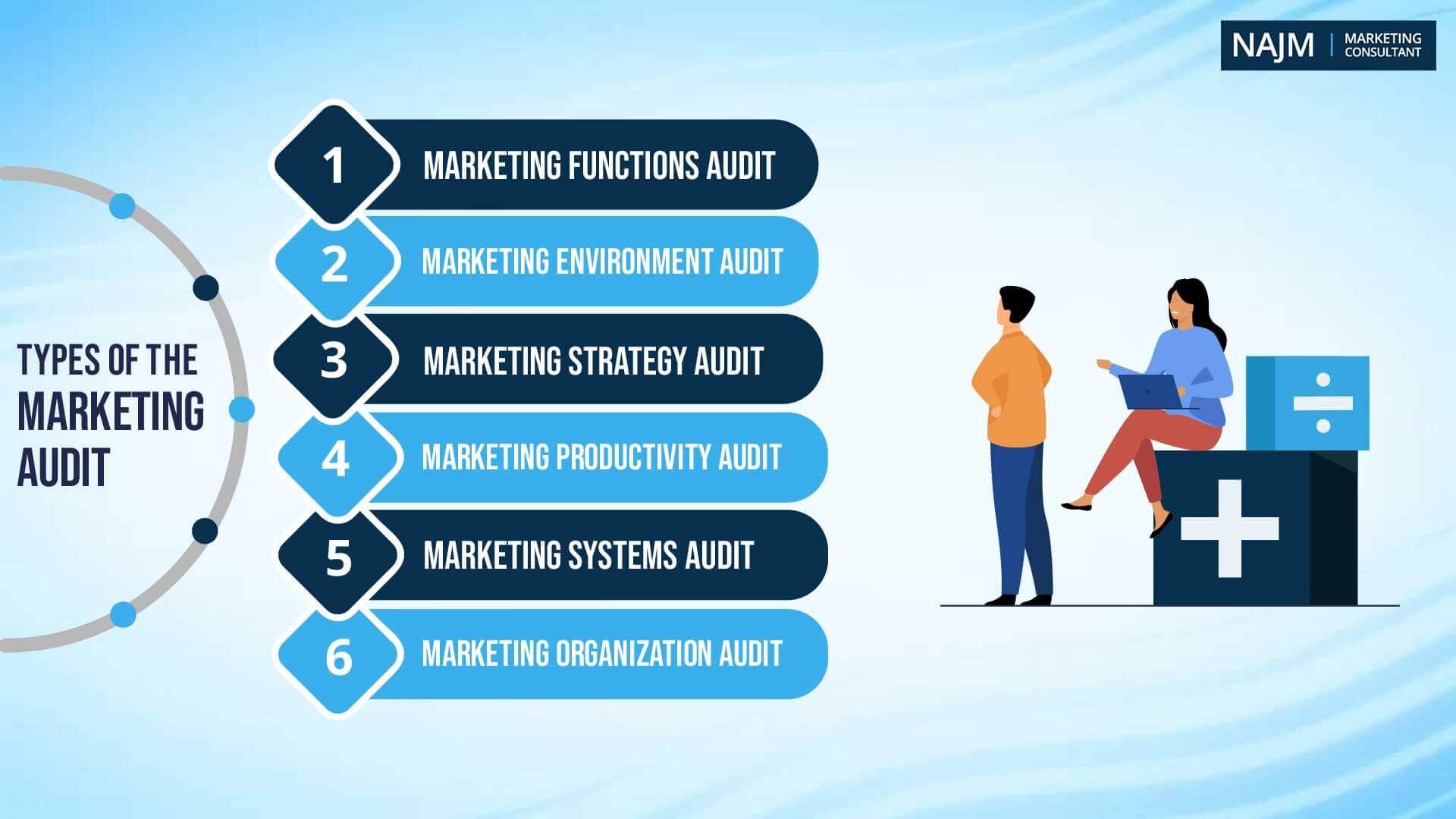
There are various types of marketing assessment that your company can engage in today. You might prefer to focus exclusively on a single part of your marketing strategy with a social media audit or an SEO audit. Or you might prefer to do a comprehensive audit. The latter is better as many times improvement in the other can solve a problem in one area of your marketing.
Be it exclusive or inclusive; a marketing audit consists of the following three essential components:
External Marketing Audit
An external marketing examination will review factors outside of your organization that impacts its performance. Major components include:
Macro Environment Audit
Your company, competitors, and all involved operate in an environment that is determined by some forces. These forces shape the opportunities and threats for your company and others as well. These forces make up the macroenvironment. Some of these forces include demographic, economic, natural, technological, political, and cultural environments.
Every company, no matter how big or small, are affected by the macroenvironment forces. Some of these forces are predictable and can be handled through efficient management. On the other hand, other forces are uncertain and difficult to handle. Consider the current COVID-19 pandemic- it is unpredictable, and all businesses had difficulty controlling its effects.
The ‘Opportunities’ and ‘Threats’ parts of the SWOT analysis can help you conduct an audit of your company’s macroenvironment. A PESTEL analysis enables you to review each of the forces individually and in greater depth.
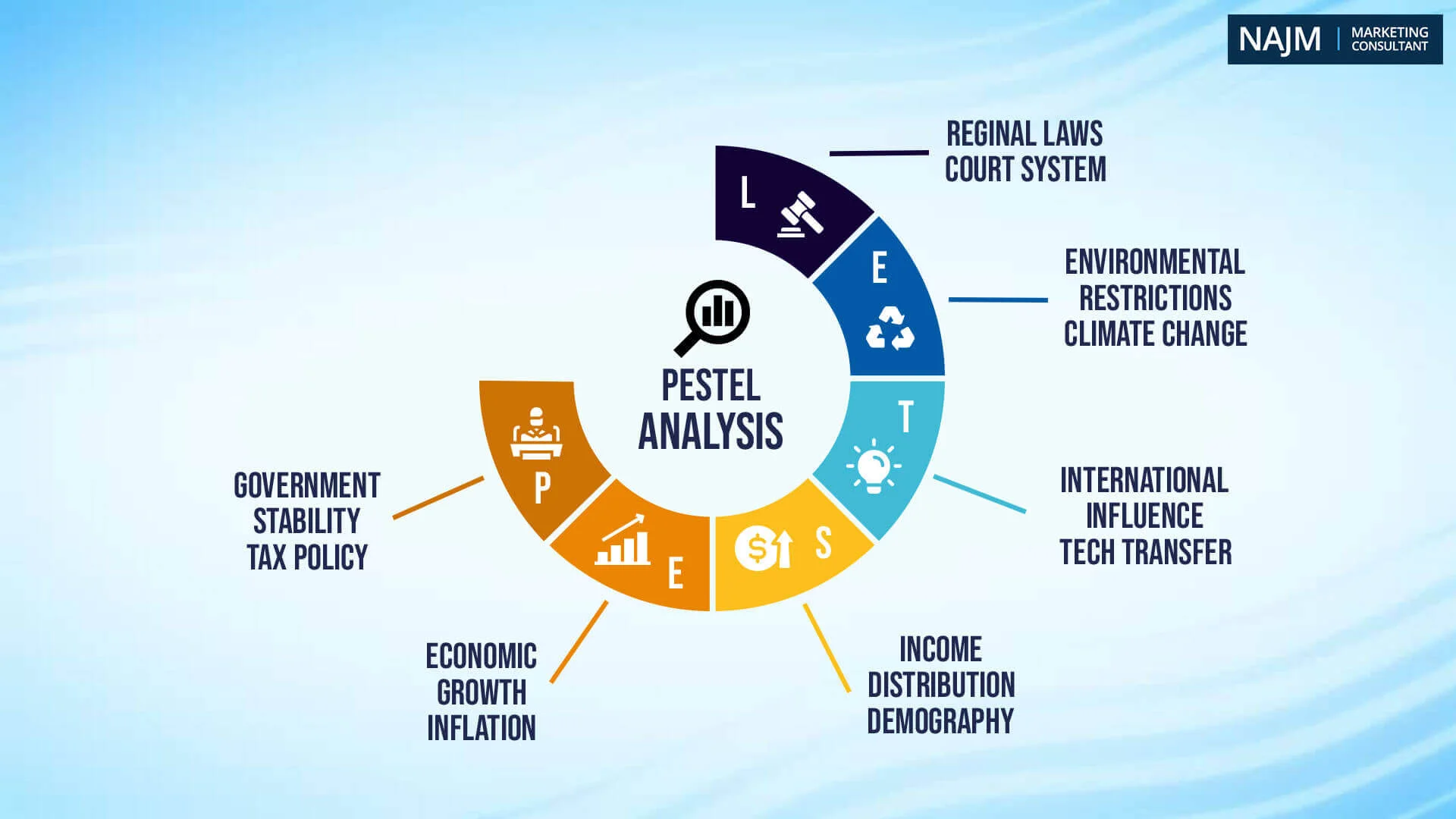
Task Environment Audit
The task environment is a part of the microenvironment: forces close to your operations and affects your performance. What separates the task environment is that it contains actors who are not in control under you- suppliers, distributors, retailers, and customers. On the other hand, your employees are a part of the microenvironment but not in the task environment as you have control over them.
In a task environment audit, you will evaluate your relationship with your suppliers, retailers, intermediaries, and distributors. You might want to ask the following questions:
- Are you able to operate effectively and efficiently with these actors?
- Have you been able to create a synergy with these actors?
- How much of the bargaining power you have over them?
- How much of the bargaining power they have over you?
- Are you too dependent on them because their problems lead to a dent in your operations and services?
A task environment audit for many global companies, for example, has to lead them to find they are overly dependent on China for supplies which broke down due to the pandemic.
Competitor Audit
A vital force in your task environment is the competition. Let’s face it- no business exists without competition unless it is a monopoly. Competitors will be an essential part of your business. You need to beat them to thrive in the market.
A competitor audit will exactly help you beat your competition. In a competitor audit, you identify competitors, analyze their strengths and weaknesses, and find opportunities you can use to leverage.
You can review competition on various levels. Some auditing tools to help you in the review are:
- Alexa: To understand your target market and target audience
- Open Site Explorer: For backlink research and analysis
- Quick Sprout: SEO tool to analyze competitors’ sites
- Open Link Profiler: To know the industry and influence of a particular competitor.
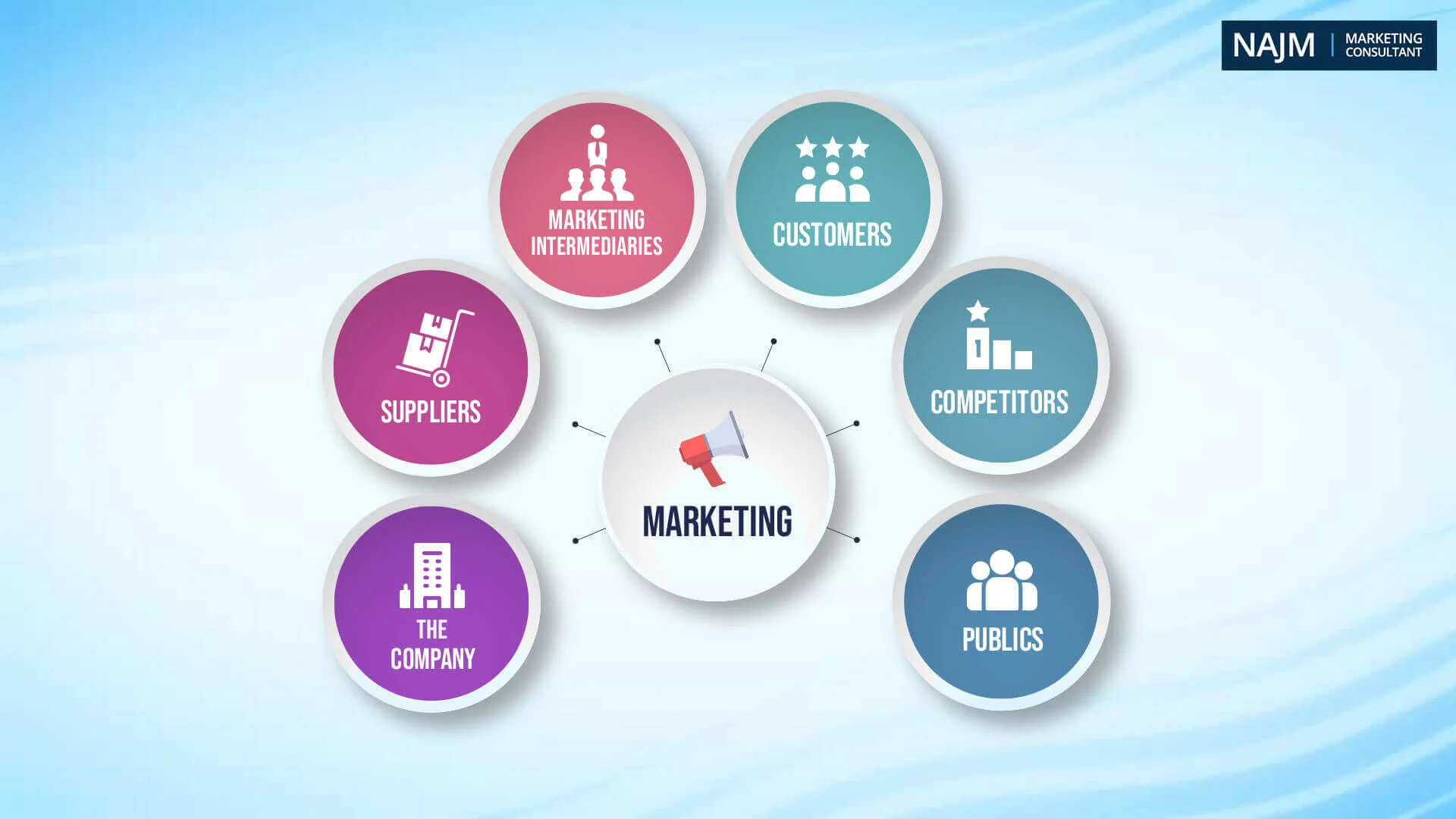
Internal Marketing Audit
The internal marketing check deals with evaluating the internal aspects of your company. While the external review emphasizes the ‘Opportunities’ and ‘Threats’ parts of a SWOT analysis, an internal one focuses on the ‘Strengths’ and ‘Weaknesses.’
Reviewing your internal marketing operations is crucial as you need to see whether your company is meeting the mission, vision, goals, and objectives set out earlier. It helps make changes in your organization so that your marketing strategies can align with your business goal.
It might be hard for you to check up your organization’s marketing efforts because of biases. So it’s better if you let an external auditor do this job for you.
Marketing Organization Audit
A marketing organization audit is simply the evaluation of the company’s marketing staff at all levels of the hierarchy. Any organization is composed of several employees, and it is important to see whether they are working to help achieve the organization’s goals.
Some questions you might need to ask for such type of audit are:
- Is there excellent communication and working relationship between marketing and sales?
- Are managers able to plan profits or only sales volumes?
- Is cooperation between different marketing departments excellent?
- Are there any groups in marketing that need more training, motivation, supervision, or evaluation?
- Is there any problem between marketing and manufacturing, R & D, purchasing, finance, accounting, or other departments that need attention?
Marketing Function Audit
Marketing function audit is to give a check up on the firm’s core marketing capabilities. Meaning, you review your product or service offerings, branding, promotions and pricing strategy.
In your check-up of your core marketing functions, ask these questions:
Marketing Systems Audit
These days, there is no business that does not collect and analyze data. A Marketing Systems audit reviews the systems employed to collect and analyze data. Some of the systems involved in the audit include:
- CRM and Marketing Automation System: Business Intelligence tools
- Lead Management Processes: Lead scoring, lead routing and qualification
- Marketing Campaigns set-up and performance tracking: Multi-channel/touch attribution
- Campaign assets: Email templates and landing pages
- Database health: Coverage, quality, integrity and leads to account mapping and segmentation
- Marketing performance reporting and analytics
-Marketing Strategy Audit
It will not matter how much you achieve if what you gain is not aligned with your business goals and objectives. A marketing strategy audit would evaluate the purpose and vision of the organization and its objectives and priorities. It will determine whether the current marketing strategies being adopted are adequate and appropriate regarding the company’s resources.
A part of the marketing strategy audit is the marketing productivity audit. It is where the auditors will check at the success of the current marketing strategies. Cost-effectiveness and profitability are the two critical items where auditors will look. This type of auditing helps your company understand how to change capital to optimize profitability and return on investment.
-Special Types of Audit
You can dive deeper and add some specific marketing elements in your audit. This addition can help you conduct an even more comprehensive review.
SEO Audit

As a digital marketer you already know the importance of Search Engine Optimization (SEO). With search engines continuously updating their algorithms, the rules of SEO updates as well. In an SEO audit, your job will be to ensure that you adopt new SEO techniques, remove red flags, and stay ahead of your competitors.
While a comprehensive outline of an SEO audit deserves a post of its own, here are some basic elements you need to consider when conducting one:
- Back-end factors: Check out whether your site is accessible (i.e. can be accessed by search engines) and indexable (i.e. how many pages of your site are accessed by search engines).
- Front-end factors: Review titles, tags, content, keywords, and metadata. Ensure they are optimized for search engine availability.
- Off-page factors: Is your site getting links from other trustworthy sites? How well does your webpages and domain perform in search engine results?
Each element of an SEO audit requires its own audit tool. Start off with a crawl of your website using UberSuggest (click on the Site Audit button on the left Sidebar after entering your site URL). Then you can measure site speed using Google Page Speed or YSlow. For finding indexing problems, use Google Search Console or Screaming Frog.
For doing front-end factors audits, run a keyword ranking search using tools like SEMrush. The results will help you develop your keyword strategy for front-end SEO. Finally for off-page factors, backlink analysis tools like Ahref, Moz Pro, or Majestic SEO.
Social Media Audit
Each social media channel you deploy is different. But at the same time, you need to maintain consistency in communications across all the channels. Therefore, you need to conduct a social media audit, preferably monthly.
Some information you need to record while performing the audit:
- The number of followers for each account
- Engagement metrics
- Demographic information
- Popular content
Most marketers recommend using a spreadsheet tool to record the aforementioned information. The leftmost column of such a spreadsheet should contain the account name or URL for each of your social media accounts. The following columns will then record the other information. Ideally, your audit spreadsheet will look like this:
Content Marketing Audit
If you are interested in evaluating your content marketing efforts, a content marketing audit is the best thing for you. You can then combine your inspection of your content marketing with those of SEO and social media in order to get a comprehensive view of your digital marketing efforts.
For conducting an audit of your content marketing, gather the following information:
- Type of Content (article, blog post, informational page, landing page, infographic, etc)
- Assigned Tags or Categories
- Number of Comments
- Number of Social Shares
- Call to Action
- Associated Sales Funnel Stage
- Conversion Data
Like a social media audit, create a spreadsheet for this one as well. Review frequently so that you can ensure your content marketing campaigns are in compliance with your strategies and goals.
Steps in running a Marketing Audit
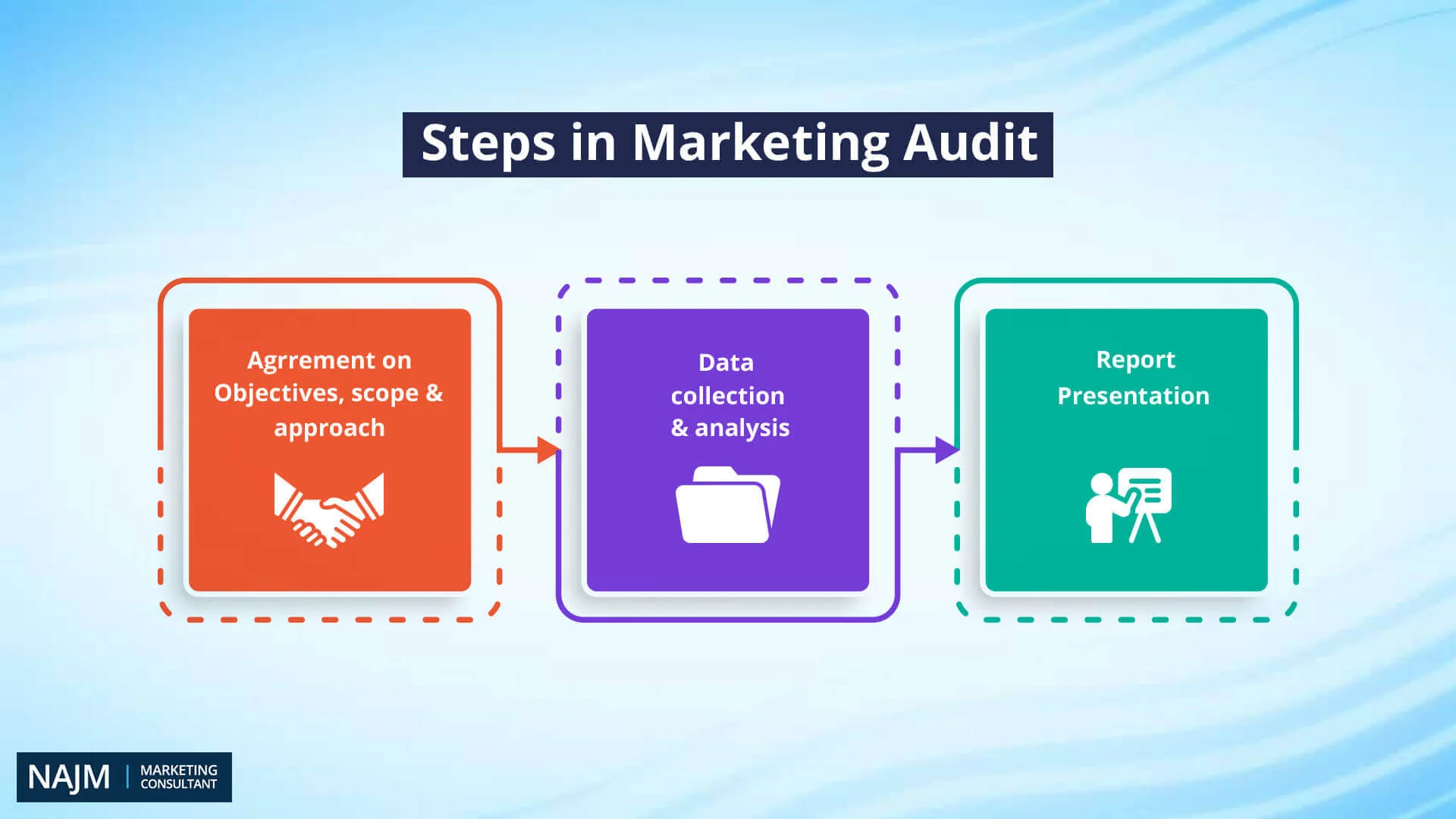
Every type of audit mentioned above is different. So are audits conducted by different types of firms. But all audits share some common stages. These stages can be grouped into three: Pre-audit, Audit, and Post-audit.
1) Pre-audit
In this stage, you answer some Wh-questions regarding your audit:
-WHo will perform the audit?
Will you conduct a self audit or an outside audit? If you conduct a self audit, maintain objectivity in the audit otherwise the aims of it may not be achieved. If objectivity cannot be maintained, an outside auditor (an independent practitioner or a specializing company) can be the choice for you.
-WHen to perform an audit?
An audit is mainly done for performance improvement. So it seems intuitive to perform one when the company is facing problems, like, losing market share or revenue.
But the hallmark of a great audit (as mentioned in the later section) is that it is periodical, i.e. conducted from time to time. When you perform a periodic inspection, you can anticipate problems and develop solutions beforehand. This will definitely save your time and money. So consider holding frequent audits.
-How to conduct the audit?
Finally, set out the design of your audit. What processes are you going to employ? What tools are you going to use? Enumerate them and then inform your auditors.
2) Audit stage
You now come to the main part of the audit- the audit itself. As mentioned before, the process will be different depending on the type and methodology you choose. But then again, these steps will be common in this stage:
– Set Goals
Although we gave you reasons before on why to conduct an audit, you will definitely have your own reasons to conduct one. So set some goals and objectives you want to achieve from your review.
Some examples of goals can be:
- Increasing company visibility
- Increasing audience size
- Differentiating from competition
- Increasing or maintaining market share
- Generating qualified sales leads
- Increasing usage among existing customers
The goals and objectives will depend on the type of audit you do. Ensure that everyone involved in the audit knows them so that you can conduct a smooth and successful audit.
– Gathering data
In this step, the auditor collects information necessary for the audit. And the one way to collect data is through research. Gather data and keep a record of them.
The type of data to be collected will always depend on the type of audit you conduct. For example:
- Likes, shares, engagement, click-through rate and social influence for measuring social media performance.
- Bounce rate, average time on page, conversion rates and click-through rate for measuring website performance,
- Open rates, subscription levels, and unsubscribe rates for measuring email marketing
You might also need external information as well, especially for macroenvironment and competitor audit. Refer to industry reports and publicly available information for such data.
– Analyze
Once you gather data, you can analyze it. Some analysis tools you can use are:
- SWOT (strengths, weaknesses, opportunities, threats) analysis
- PESTLE (political, economic, socio-cultural, technological, legal, and environment) analysis
- Porter’s Five forces analysis, that examines competitors, threat of new players in the game, customer power, supplier power, and the threat of substitute products.

Compare the data with those of your competitors while doing your analysis. The comparison can help you determine your position in the market. You should also check whether your efforts are in line with your goals and objectives.
3) Post audit: Adapt and optimize
There is of course no meaning in an audit if you do not take any actions afterwards. So once the auditors complete, take actions as recommended by them. Adapt to new changes and optimize your performance.
Components of a successful marketing audit
No matter how you do a review, there are some rules following which will help make it a successful one. These golden rules make up the components of an excellent marketing review. The four elements are:
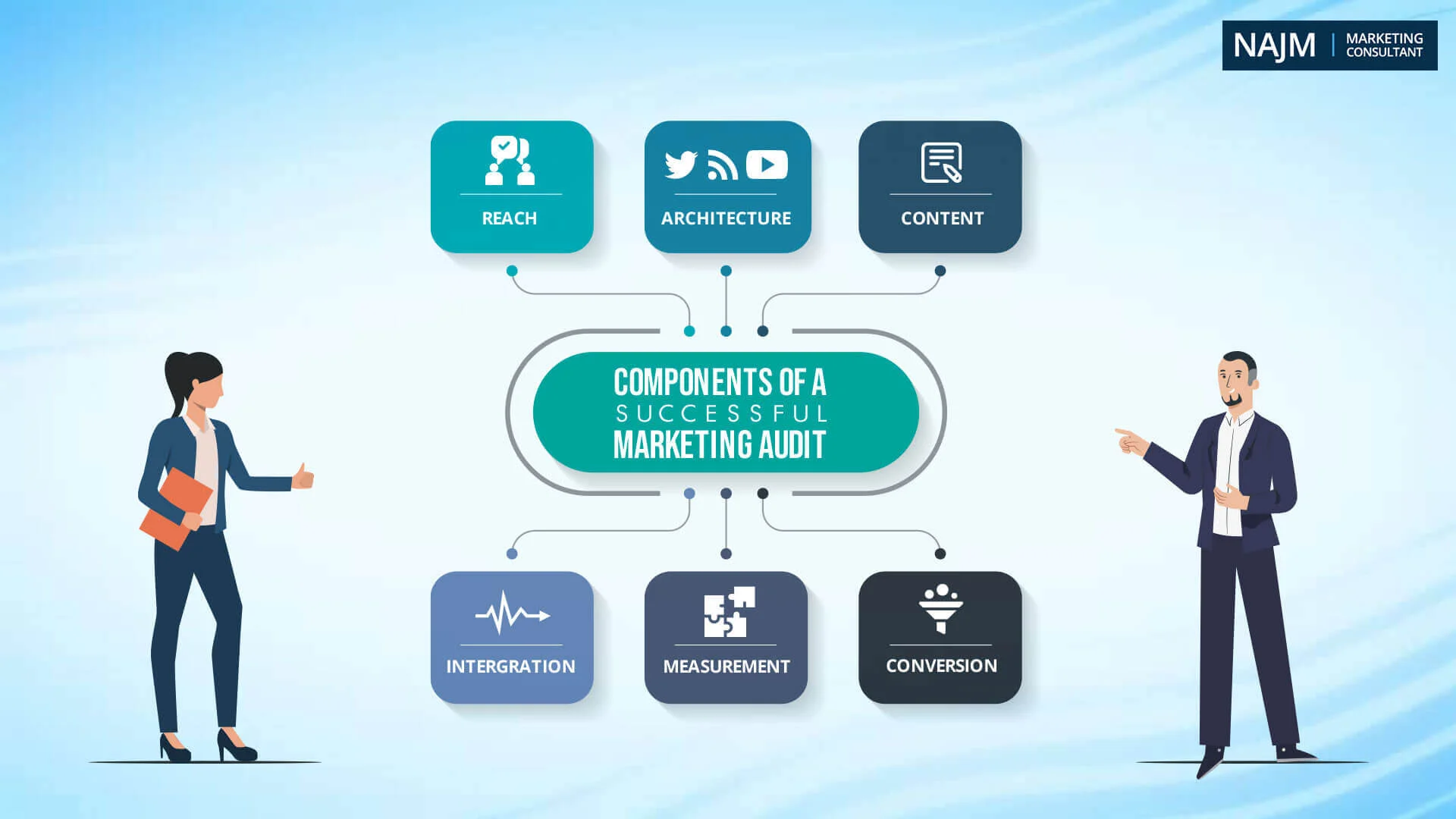
-Comprehensive
A holistic marketing audit is the best type of inspection. You might be inclined to conduct checks only in areas where you think there are problems or areas where you feel you are doing great. However, a comprehensive inspection, consisting of examining every sector, will help you find new opportunities and strengths in fields you never knew your business had previously.
-Systematic
You will want your audit to be a successful one, i.e., you gain actionable insights from it. Therefore, your inspection needs to be conducted systematically. Adopt an organized process to review the company’s micro and macro environments, marketing philosophy, objectives, strategies, and other campaigns.
-Independent
Whoever conducts the audit cannot be biased in any way. This is because a biased auditor may not carry it out in a comprehensive manner. For example, you assign your content marketing head as the auditor. If the content marketing department is not doing well, he/she will take every step to hide its shortcomings.
An independent audit will also help you carry out a comprehensive review, which will not be possible otherwise. So when hiring an auditor, it is best to hire an external audit.
-Periodical
Generally, businesses conduct checks when they feel a problem. Although logical, this approach is not correct as an audit can take a long time before a solution can be found. This may lead the problem to linger and even worsen.
The best approach is to conduct periodic audits. In this way, you can anticipate a problem even before it takes place. This will help you find solutions beforehand.
Conclusion
Only a systematic audit can help give your business the needed boast or further improve results. Follow the steps mentioned in this blog and you can achieve wonderful results!





